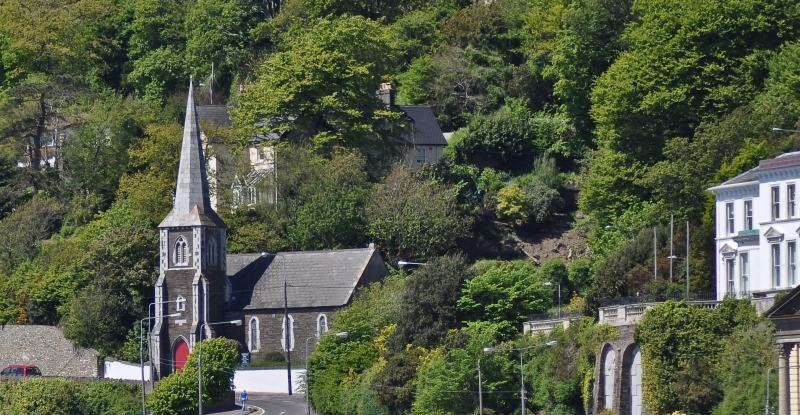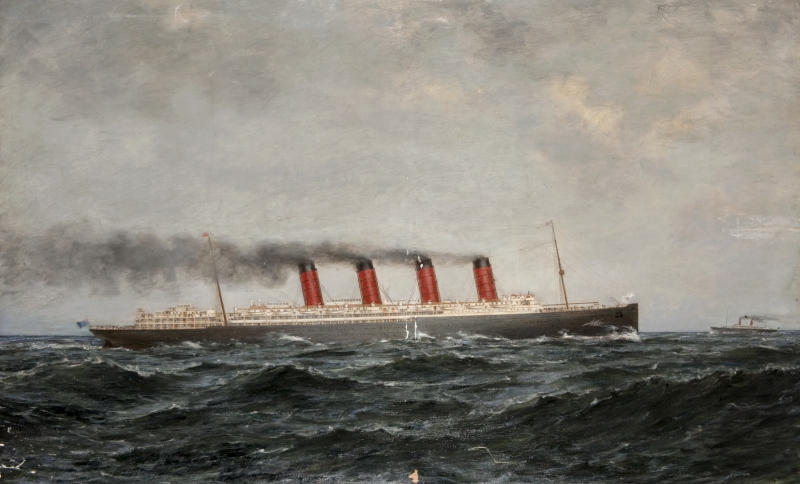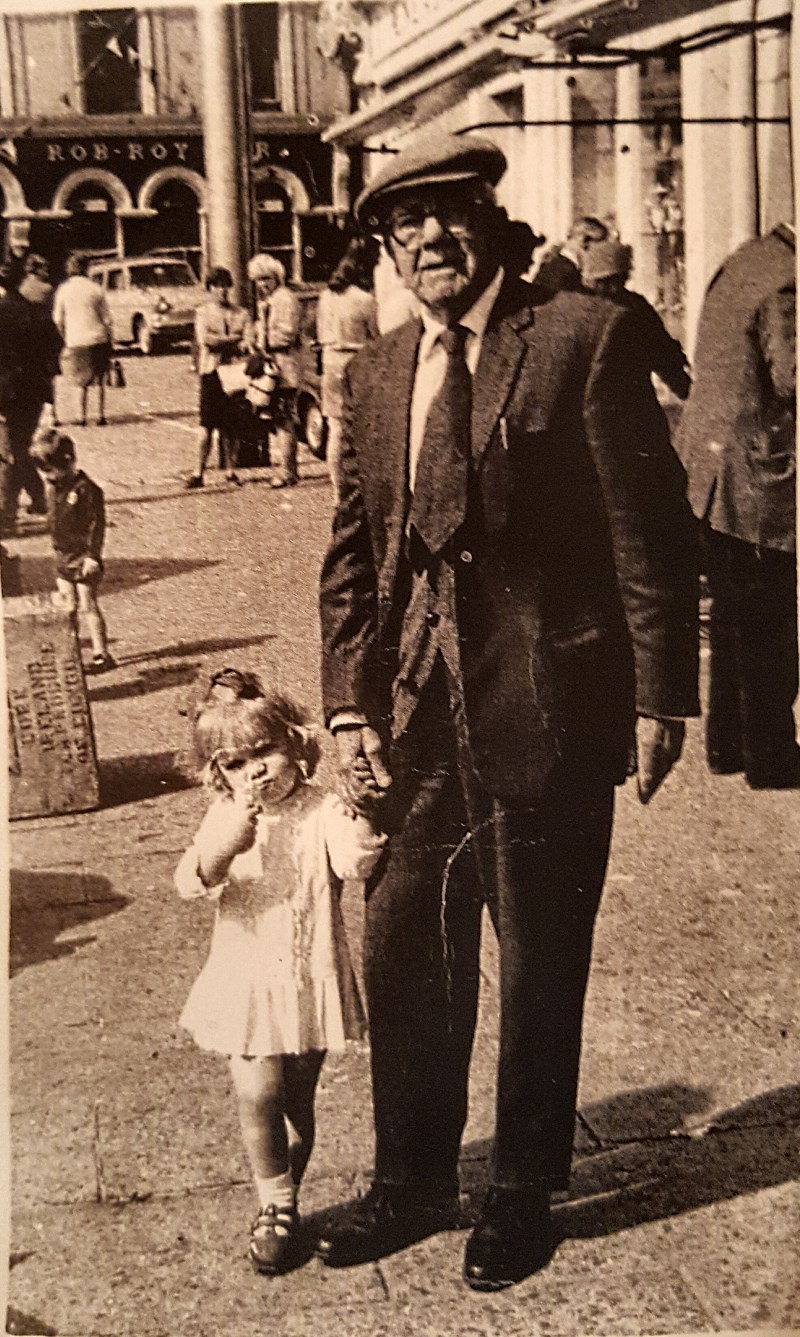
Cobh Museum is situated overlooking Cork Harbour. The exhibitions reflect the cultural, social and maritime history of Cobh and the Great Island. Formerly known as Queenstown, Cobh has a long maritime history and is known throughout the world for its association with emigration and was the last port of call for the RMS Titanic.
There is a small genealogical reference section in the museum where visitors can do their own family research.


View of Cobh Museum ( Scots Church ) from the water.
The Museum is located on the High Road
- at the end of the main street and up a gentle hill.
The Scuttling of the AUD 1916

SS Castro Disguised As The Aud
This exhibition was mounted as part of the Museum's 1916 commemorations in collaboration with Mr. Jim Shealy, local historian. It explores this event which took place in Cork Harbour in 1916. On display is a rifle and cartridges from the gun-running ship 'Aud'.

Lusitania - A Day In May

On the 1st of May 1915, the Cunard steamship, RMS Lusitania left New York bound for Liverpool. Unknown to all, the destination of many on board would be Queenstown, Co. Cork, Ireland.
The tragedy which ensued when the RMS Lusitania was struck by a torpedo from a German submarine on May 7th off the Old Head of Kinsale, Co. Cork, left an indelible mark on the town of Queenstown [Cobh].
The search, rescue and burial operations were coordinated from the town of Queenstown in Cork Harbour which at that time was a British Naval Admiralty base.
This exhibition explores the impact of the sinking of the Lusitania on the people and town of Queenstown [Cobh].


Queenstown in 1915
Although the First World War was in progress and emigrant traffic had decreased significantly there were still travellers passing through Queenstown. British war ships and trawlers anchored in the harbour and there was increased employment in Haulbowline Dockyard.
The railway and the steamboats ferrying local traffic within the harbour were essential to the commercial life of the town.
This section of the exhibition gives glimpses of the Queenstown of 1915 through photographs and artefacts associated with the day to day life of the town.

Having a large natural harbour, Queenstown was the perfect location for a British Naval base. One of the biggest historical impacts on the town happened in 1915 when RMS Lusitania was torpedoed off the Old Head of Kinsale about 20 miles from Queenstown. Many of the survivors and victims were brought to Queenstown. The people of the the town rose to the huge challenge of rescue, comforting the shocked and injured survivors, and identifying, repatriating and burying the dead. The ancient, Old Church Cemetery in Cobh became the final resting place for 169 of the souls who perished in the sinking of RMS Lusitania. The Museum is keeper of objects related to this significant event.
Museum Opening Hours
Monday-Saturday:
11am - 1pm & 2pm - 5pm
Sunday:
Closed
Admission Charges:
Adult 4.00
Student/Senior 2.50
Child 2.00
Family 10.00
Please email or phone us for group rates.
Telephone: + 353 21 4814240
email: cobhmuseum1@gmail.com


